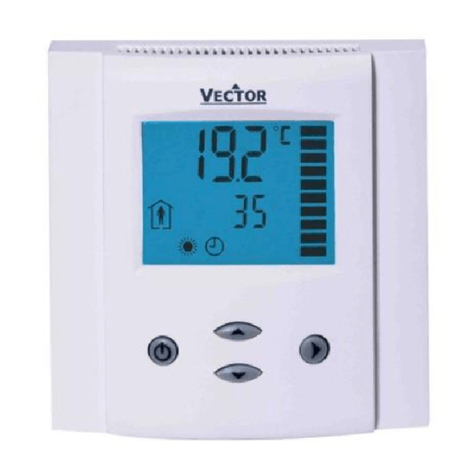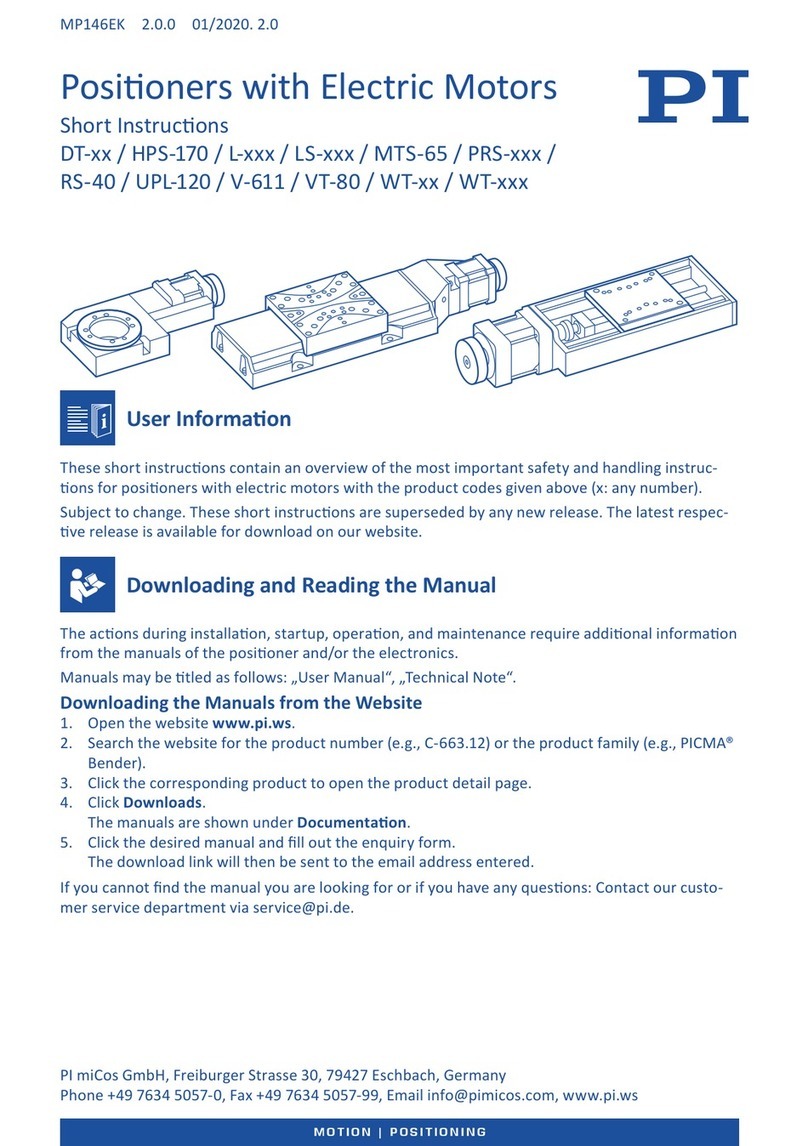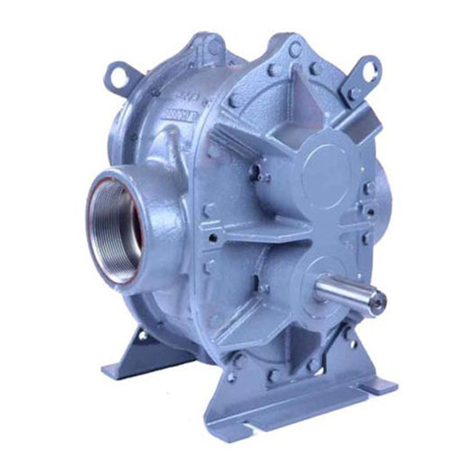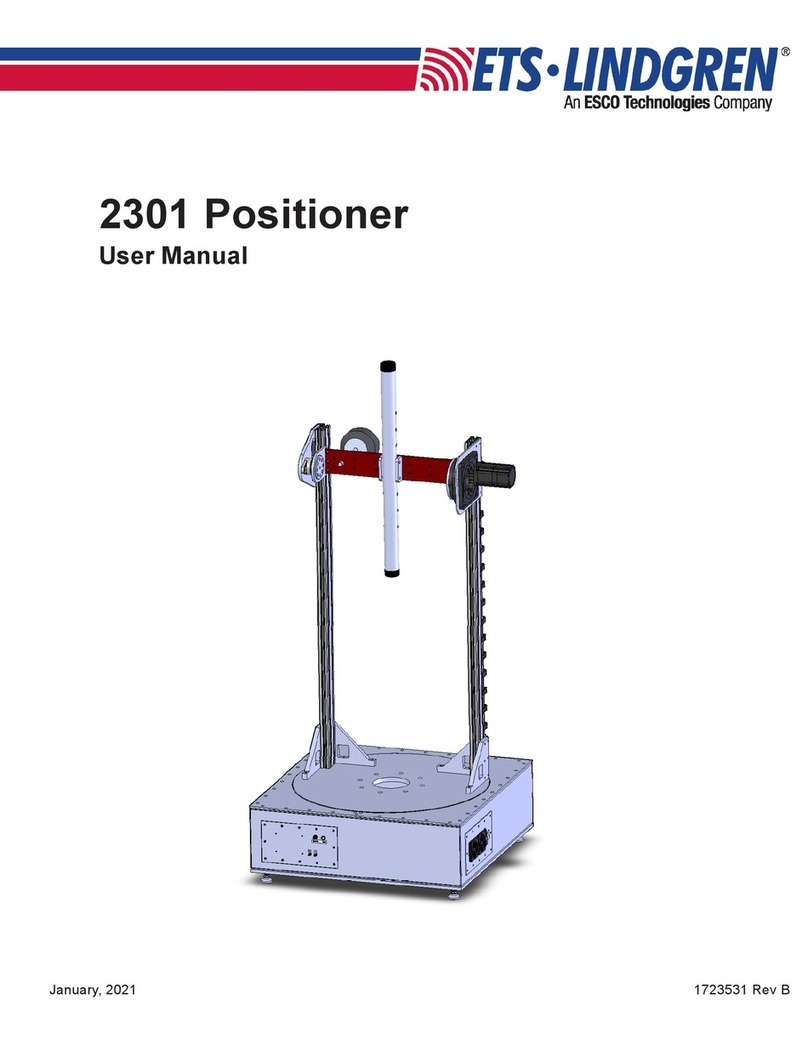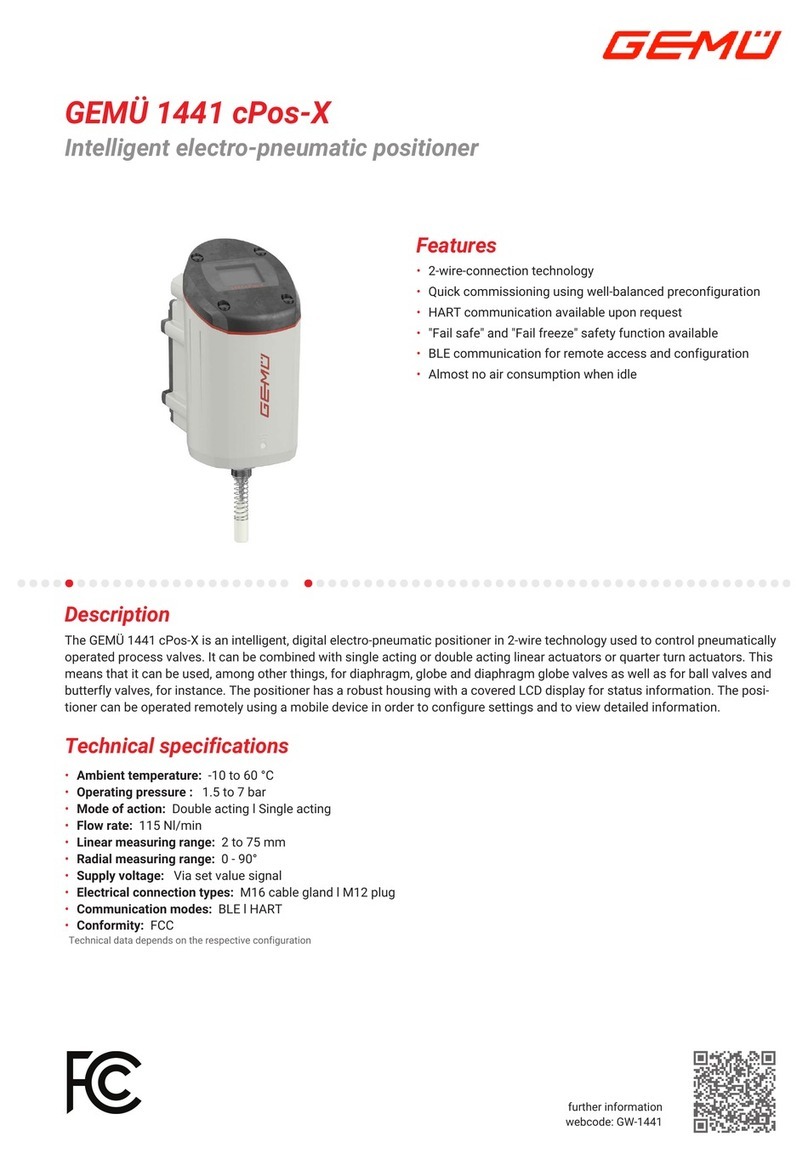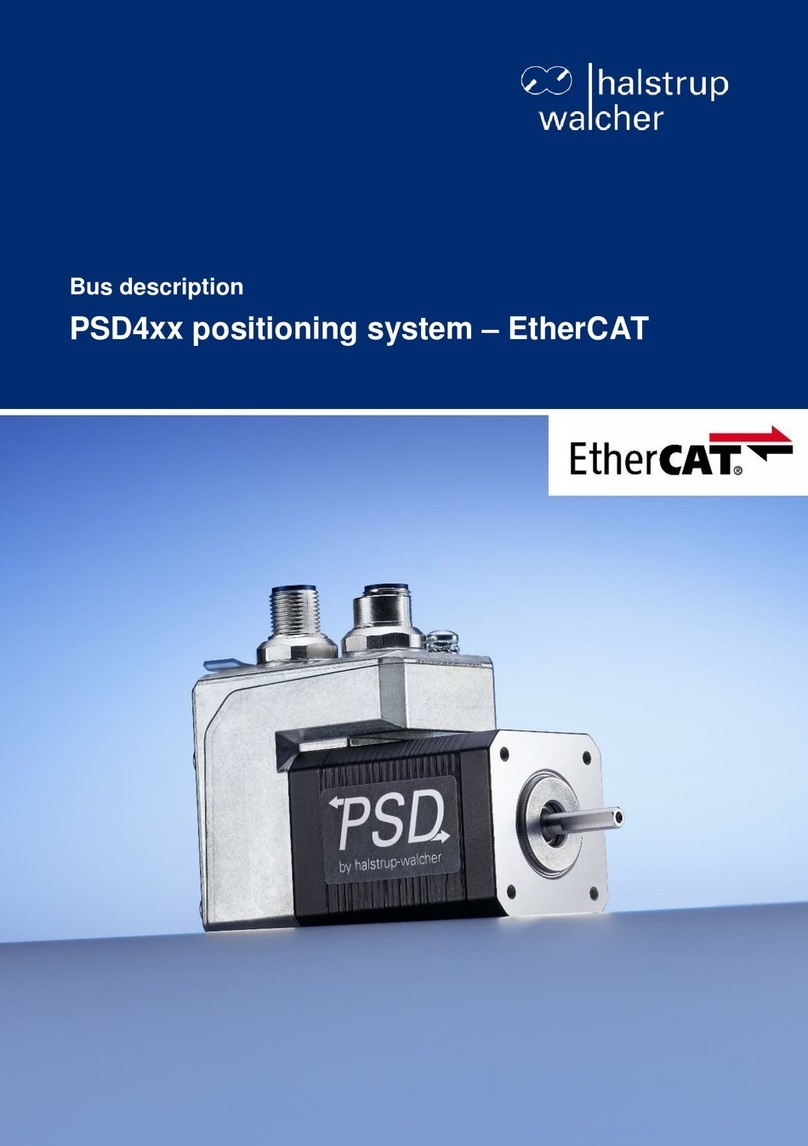AUMA Matic Series Use and care manual

AUMA Matic Positioner
Calibration Instruction AUMA Actuators, Inc. USA
AUMA MATIC Compacts consist of motor controls, local controls and other control elements, which may be
required to operate an electric actuator
Scope
These instructions are intended to cover the AUMA MATIC compact in both the C and S configuration with an
AUMA positioner board. These instructions are for general startup and basic trouble shooting.
For calibration/setting of Standard Interface Board or Pulse Timer, refer to the appropriate instructions.
The positioner is usually supplied internally mounted in the AUMA MATIC Compact (Figure 1). These instructions
also apply if the positioner is remotely mounted. The positioner is programmable for several command and
internal feedback signals. Additionally, the choice of fail modes on loss of these signals can be chosen. Refer to
the programming section (Figure 4) for more information.
The Standard version of the positioner is supplied as a clockwise-actuator output on decreasing-command signal.
Consult the AUMA factory for information on other available configurations.
The convention of clockwise actuator output to close is used throughout this instruction.
General Description
The positioner is an electric controller, employing solid state circuitry, intended for regulating electric motor driven
actuators used on valves, dampers and other devices requiring accurate positioning control. Accurate positioning
is attained through the use of a precision position feedback potentiometer or current device (RWG current
transmitter). The controller drives the motor reversing starters which can be electromechanical (AUMA MATIC-C)
or solid state (AUMA MATIC-S). The controller utilizes a comparator circuit which senses the error between the
input command signal and the internal position feedback signal. The controller then energizes the motor
reversing starter control circuit to drive the actuator in the direction necessary to reduce the error signal to within
the customer set deadband.
Two modes of control are available. In the first mode the motor is continuously energized until the error between
the feedback signal and setpoint is zero. In the second mode (pulse mode) the motor is pulsed based on the
setting of a potentiometer, Time-on (P8), until the error is 25 percent or less. Then the Time-on is reduced by a
factor of 3 through the final 25 percent of error. The initial setting of “OFF” time remains constant. In the pulse
mode the initial “ON” and “OFF” times are field adjustable via the potentiometers P8 and P10.
Note: The AUMA MATIC with positioner generally incorporates a means of remote manual operation using
contact closure. This circuit, using the remote command board, is designed as a secondary input for
push buttons or relay contacts. It is not intended for “modulating” operation when an analog signal is not
available. An interface board is available for use in this case.
All information in this document is subject to change without notice.
ISSUE 02/02 Page 1 of 11 SE-SI-35-0007

AUMA Matic Positioner
Calibration Instruction AUMA Actuators, Inc. USA
Electrical Connections
CAUTION: Observe safety regulations.
• Verify that the motor and control voltages correspond with equipment supplied. Refer to the nameplate on
motor and/or AUMA MATIC Compact.
• Attach conduit or cables following approved practices.
CAUTION: Appropriate conduit and sealing methods must be followed to ensure the NEMA rating for the
enclosure furnished
• Connect field wiring according to wiring diagram supplied. If drawing is not available, contact the nearest
AUMA office with the Sales Order or Serial Number located on the actuator nameplate. A replacement
drawing will be provided.
NOTE: ACTUATOR LIMIT SWITCHES MUST BE SET USING APPROPRIATE SETTING INSTRUCTIONS
PRIOR TO PROCEEDING.
Compartment
Cover
Positioner Board
Logic Board Power Supply
Monitor Control
Board
Figure 1
AUMA MATIC Controller
All information in this document is subject to change without notice.
ISSUE 02/02 Page 2 of 11 SE-SI-35-0007

AUMA Matic Positioner
Calibration Instruction AUMA Actuators, Inc. USA
All information in this document is subject to change without notice.
Logic Board Programming
The AUMA MATIC Compact contains a programmable logic board (Figure 2). The following DIP switch settings
are made on the logic board. The factory has preset the logic board switches per the order requirements, as
required/or requested, prior to shipment. Typically, no further adjustment is required for proper operation.
Programming
• Refer to Figure 2.
• The Logic Board has 3 sets of switches S1-2, S2-2 and S3-2.
• Switches S1-2 and S3-2 allow for either limit or torque seating in closed and open positions.
Switch S1-2
• In position 1, the actuator is set for limit seating in the clockwise direction.
• In position 2 the actuator is set for torque seating in the clockwise direction.
Switch S3-2
• In position 1, the actuator is set for limit seating in the counterclockwise direction.
• In position 2 the actuator is set for torque seating in the counterclockwise direction.
Switch S2-2
Switch Position S2-2 “ON”
S2.1 Remote seal in for clockwise
S2.2 Remote seal in for counter clockwise
S2.3 Local seal in for clockwise
S2.4 Local seal in for counter clockwise
S2.5 Blinker transmitter off
S2.6 Torque switch included in collective
fault signal
Also provided on the Logic Board are four solder links. When the soldered link is present on pads J1 and J3, the
integral open and close lights on the Monitor Control board within the AUMA Matic will both be on in a
intermediate valve position. When the soldered link is present on pads J2 and J4 the integral open and close
lights on the Monitor Control board will both be off in an intermediate valve position.
Down is on
Figure 2
1 2
1 2
Solder links
J1-J4
ISSUE 02/02 Page 3 of 11 SE-SI-35-0007

AUMA Matic Positioner
Calibration Instruction AUMA Actuators, Inc. USA
Test Run
• Switch selector switch to local position. If local control is not supplied, refer to electrical drawing for reference
to local operation.
• Turn control switch or operate push-button in either open or close direction.
If actuator fails to operate, verify the following possible conditions.
NOTE: 3Ø AUMA MATIC compacts incorporate a phase discriminator. If AUMA MATIC fails to respond to local
and remote operation, reverse U1 and W1 at field terminals.
NOTE: Actuators shipped after March 2002 incorporate automatic phase correction.
• No line power.
— Check for loose connection.
— Check for correct voltage at terminals U1, V1 and W1.
— Check for correct capacitor connection (1Ø only), if required.
• Field jumpers are not correct.
— Verify the field wiring matches electrical drawing supplied by AUMA.
• Fuses are open.
CAUTION: Before checking/replacing fuses, ensure all power is disconnected.
— Remove selector switch/push-button cover (Figure 1). Primary fuse(s) are located in black fuse holders.
— Secondary fuses are located on power supply board which can be accessed by removing the monitor
control circuit board where the primary fuse(s) are located.
NOTE: Replace fuse(s) with same type and size. For fuse sizes, refer to appropriate service instruction or
consult factory.
Calibration Description and Preparation
Technical Data
Input Signals (E1): 4-20 ma / 0-20 ma; 0-5v DC (for others, consult factory)
Feedback (E2): 0-5v via precision potentiometer, typical
Sensitivity: 0.5 to 2.5 percent (0.25 min ≤19 rpm)
Time Delay: 0.5 to 15 seconds
LED Indication: OPEN/CLOSE/PAUSE; loss of command signal.
Input Resistance: 249 Ω
All information in this document is subject to change without notice.
ISSUE 02/02 Page 4 of 11 SE-SI-35-0007

AUMA Matic Positioner
Calibration Instruction AUMA Actuators, Inc. USA
All information in this document is subject to change without notice.
The AUMA Matic positioner incorporates the following features for field calibration and commissioning (Figure 3).
ZERO (0/P3) This control adjustment calibrates the positioner to correspond to the lowest command
signal.
SPAN (max/P4) This control adjustment calibrates the positioner to the full 100 percent range of the
command signal.
TIME DELAY This control adjustment is designed to eliminate the positioner
(t-off/P10) from reacting to transient signals. Adjustable delay from 0.5 seconds to 15 seconds.
COARSE SENSITIVITY This control adjustment determines the amount of error signal that occurs before
(∆E/P9) the motor is energized in the direction determined by the input signal, 0.5 to 2.5
percent.
FINE SENSITIVITY This control adjustment determines the amount of error signal that occurs before the
(Sens/P7) motor is energized in the direction determined by the input signal. This is only used for
actuator speeds of 19 RPM and below, where less than 0.5 percent accuracy is
required (0.25 percent minimum).
DIP SWITCH S1-7 Allows command signal (E1) and feedback signal (E2) to be selected.
DIP SWITCH S2-7 Allows controller to position the actuator on loss of command or feedback signal. In
addition, variable pulse width modulation can be selected.
DIP SWITCH S3-7 Selects standard or inverse operation.
TIME-ON (t-on/P8) Allows calibration of initial “ON” times in the pulsing mode.
V10 LED - loss of E1, or wrong polarity
V18 LED - pause mode (pulse width modulation).
V27 LED - closing circuit energized
V28 LED - opening circuit energized
MP1,MP2,MP3,MP4 Test points - MP1 = common; MP2 = feedback (E2); MP3 = input (E1);
MP4 = common (E1)
E1 Input signal
E2 Feedback signal
Positioner Board Positioner Cover Plate
Figure 3
ISSUE 02/02 Page 5 of 11 SE-SI-35-0007

AUMA Matic Positioner
Calibration Instruction AUMA Actuators, Inc. USA
All information in this document is subject to change without notice.
• The optional RWG 4-20ma feedback transmitter, if supplied, must be calibrated prior to positioner calibration.
Refer to the AUMA SA or SG.1 Operation Instruction Manual for calibration instructions.
NOTE: Verify proper limit switch setting prior to positioner calibration.
Calibration Procedure
Positioner adjustment end position CLOSED (standard version)
NOTE: Prior to the positioner setting it has to be ensured that the limit and torque switching of the
actuator as well as the position feedback have been set.
• Set selector switch (local controls) to position LOCAL.
• Run actuator by pressing push-button to end position CLOSED.
• Supply nominal value E1 of 0 or 4 mA (see wiring diagram).
• Turn potentiometer P10 (toff) counter-clockwise to the stop (Figure 3).
NOTE: Missing signals E1/E2 or wrong polarity are indicated by LED V10 ”E1/E2 < 4 mA” (Figure 3)
Possible LED indication:
(refer to Figure 3)
Required setting in end position CLOSED
(refer to Figure 3)
LEDs are not illuminated Turn potentiometer ”0” (P3) slightly clockwise until
LED (V27 yellow) lights up.
LED (V28 green) is
illuminated
Turn potentiometer ”0” (P3) slightly clockwise until LED (V28
green) goes out and LED (V27 yellow) lights up.
If
LED (V27 yellow) is
illuminated
Then
Turn potentiometer ”0” (P3) counter-clockwise until LED
(V27yellow) goes out.
Then turn potentiometer ”0” (P3) slightly clockwise until LED
(V27 yellow) lights up again.
Positioner adjustment end position OPEN (standard version)
• Run actuator by pressing push-button (local controls) to end position OPEN.
• Connect max. command signal (nominal value E1) = 20 mA.
Possible LED indication:
(refer to Figure 3)
Required setting in end position OPEN
(refer to Figure 3)
LEDs are not illuminated Turn potentiometer ”max” (P4) slightly counter-clockwise until
LED (V28 green) lights up.
LED (V28 green) is
illuminated
Turn potentiometer ”max” (P4) clockwise until LED (V28
green) goes out.
Then turn potentiometer ”max” (P4) slightly counter-clockwise
until LED (V28 green) lights up again.
If
LED (V27 yellow) is
illuminated
Then
Turn potentiometer ”max” (P4) slightly counter-clockwise until
LED (V27 yellow) goes out and LED (V28 green) lights up.
ISSUE 02/02 Page 6 of 11 SE-SI-35-0007

AUMA Matic Positioner
Calibration Instruction AUMA Actuators, Inc. USA
All information in this document is subject to change without notice.
Setting of the Sensitivity
• Set selector switch at local controls (Figure 1, Page 2) to position REMOTE.
• Input a random command signal E1. The sensitivity (∆E / dead band) is set to maximum value (2,5 %) in the
factory.
• The sensitivity can be improved or the dead band reduced by turning potentiometer ∆E (P9) clockwise. For a
precise setting of the sensitivity, a set point device with accuracy in the 0,1 mA range is required.
• For actuators with a speed of 19 rpm or less, a better sensitivity (∆Emin= 0.25 %) can be achieved by turning
the potentiometer P7 (sens) clockwise.
NOTE: When setting ∆E the following must be observed: If the number of starts is too high, this will
lead to unnecessary wear at the valve and actuator. Therefore, the maximum possible dead band
acceptable for the process must be set. .
• To prevent exceeding the max. permissible number of starts (refer to Technical data sheet SG,SAR or
consult factory) in extreme cases, a time delay between 0.5s (left stop) and 10s (right stop) may be set with
potentiometer t-off.
Positioner Adjustment End Position OPEN (inverse operation)
In standard version the maximum input signal (E1 = 20 mA) results in operation to end position OPEN.
• By switching the code switch S3-7 (Figure 4) to position ”1” an inversion of this signal definition (inverse
operation) can be achieved.
• Additionally, the potentiometer wiring at actuator terminals TA 20 and 21 must be reversed.
NOTE: Prior to the positioner setting it has to be ensured that the limit and torque switching of the
actuator as well as the position feedback have been set.
• Set selector switch (local controls) to position LOCAL.
• Run actuator with push-button to end position OPEN.
• Supply nominal value E1 of 0 or 4 mA (see wiring diagram).
• Turn potentiometer P10 (toff) counter-clockwise up to the stop (Figure 3).
NOTE: Missing signals E1/ E2 or wrong polarity are indicated by LED V10 ”E1/E2 < 4 mA” (Figure 3).
ISSUE 02/02 Page 7 of 11 SE-SI-35-0007

AUMA Matic Positioner
Calibration Instruction AUMA Actuators, Inc. USA
All information in this document is subject to change without notice.
Possible LED indication:
(refer to Figure 3)
Required setting in end position OPEN
(refer to Figure 3)
LEDs are not illuminated Turn potentiometer ”0” (P3) slightly clockwise until
LED (V28 green) lights up.
LED (V27 yellow) is
illuminated
Turn potentiometer ”0” (P3) slightly clockwise until LED (V27
yellow) goes out and LED (V28 green) lights up.
If
LED (V28 green) is
illuminated
Then
Turn potentiometer ”0” (P3) counter-clockwise until LED (V28
green) goes out.
Then turn potentiometer ”0” (P3) slightly clockwise until LED
(V28 green) lights up again.
Positioner Adjustment End Position CLOSED (inverse operation)
• Run actuator with push-button (local controls) to end position CLOSED.
• Connect max. command signal (nominal value E1) = 20 mA.
Possible LED indication:
(refer to Figure 3)
Required setting in end position CLOSED
(refer to Figure 3)
LEDs are not illuminated Turn potentiometer ”max” (P4) slightly counter-clockwise until
LED (V27 yellow) lights up.
LED (V27 yellow) is
illuminated
Turn potentiometer ”max” (P4) clockwise until LED (V27
yellow) goes out.
Then turn potentiometer ”max” (P4) slightly counter-clockwise
until LED (V27 yellow) lights up again.
If
LED (V28 green) is
illuminated
Then
Turn potentiometer ”max” (P4) slightly counter-clockwise until
LED (V28 green) goes out and LED (V27 yellow) lights
up.
Positioner in Split Range version (option)
For Split Range a modified version of the positioner is used. The standard version is not suitable for Split Range
operation.
Split Range: description of functions
Split Range allows the adaptation of the positioner to nominal value ranges which are for example necessary to
individually control several actuators (up to four actuators) with the same nominal value signal. Typical values for
two actuators are 0 - 10 mA and 10 - 20 mA or 4 - 12 mA and 12 - 20 mA. But all other values between 0/4 - 20
mA can also be set and adjusted.
Split Range Programming
Programming of the positioner at the code switches S1-7, S2-7, S3-7 can, with the exception indicated below, be
performed in the same manner as for normal operation.
NOTE: Switch S1-7 DIP 5 at code switch S1-7 must always be in position ON for Split Range version.
ISSUE 02/02 Page 8 of 11 SE-SI-35-0007

AUMA Matic Positioner
Calibration Instruction AUMA Actuators, Inc. USA
All information in this document is subject to change without notice.
Positioner adjustment for Split Range (See also example below)
• Supply the specified minimum input signal (nominal value E1) for the positioner and check by measuring with
Voltmeter at the measuring points MP3 and MP4 (Figure 5).
• Connect voltmeter to measuring points M3 and MP1.
Calculate setting value:
Initial value = E 1min [in Ampere] x 250 Ohm
Set initial value with potentiometer P5.
• Supply specified maximum command signal (nominal value E1) and check by measuring at the measuring
points MP3 and MP4.
• Connect voltmeter between measuring point M9 and measuring point MP1. Set 5 V with potentiometer P6.
• Supply input signal E1 from minimum to maximum value and check the set range 0 - 5 V at measuring point
M9. If necessary, readjust with P5 or P6.
• Apply the same procedure to the second actuator’s positioner and set according to the specified nominal
value E1.
• After setting for Split Range operation, perform further readjustment as described in Calibration section, Page 6.
Figure 4
Positioner board A7, Split Range version
Example – Two actuators are to be operated in Split Range version. Actuator 1 must be in position CLOSED with
a nominal value signal E1 of 0 mA, and in position OPEN with a signal of 10 mA.
Actuator 2 must be in position CLOSED with a nominal value signal of 10 mA, and in position OPEN with a signal
of 20 mA. .
• Positioner actuator 1:
Supply E1 = 0 mA, set with P5 = 0 V at M3, supply E1 = 10 mA, set with P6 = 5V at M9.
• Positioner actuator 2:
Supply E1 = 10 mA, set with P5 = 2,5 V at M3, supply E1 = 20 mA, set with P6 = 5V at M9.
• Perform adjustments and settings for E2, as previously described. Afterwards the nominal value E1 can be
transmitted through both actuators (can be connected in series). When operating within range E1 = 0 - 10
mA the actuator 1 moves, actuator 2 remains in end position CLOSED. When operating within range E1 = 10
- 20 mA, the actuator 2 moves, actuator 1 remains in end position OPEN.
ISSUE 02/02 Page 9 of 11 SE-SI-35-0007

AUMA Matic Positioner
Calibration Instruction AUMA Actuators, Inc. USA
Condition Programming
Function at 1)
Loss of Signal E1 Command Signal
(Reference input E1)
Feedback 2)
(Actual Value) E2 S1-7 S2-7
ON ON
12345 12345
++
+ +
++++++
4-20 mA 4-20 mA
ON ON
12345 12345
++
+ + ++++ + +
Fail as is
4-20mA 0-5v
3)
ON ON
12345 12345
++
++
+++++ +
0-20 mA 4-20 mA
ON ON
12345 12345
++++++++++
0-5v 0-5v
3)
ON ON
12345 12345
+
++
++++++ +
0-5v 4-20 mA
ON ON
12345 12345
+
++++
+++++
0-10v 0-5v
ON ON
12345 12345
++ +
+ + +++
+ +
4-20 mA 0-5v 3)
ON ON
12345 12345
++
+++
+++
+ +
Fail close
4-20 mA 4-20 mA
ON ON
12345 12345
++++
++++++
4-20 mA 0-20 mA 3)
ON ON
12345 12345
+++
+ + +++++
4-20 mA 0-5v 3)
ON ON
12345 12345
++
+ + +
+++++
Fail open
4-20 mA 4-20 mA
ON ON
12345 12345
+
Pulsing mode For further programming
refer to above.
Figure 5
Programming of Positioner
All information in this document is subject to change without notice.
ISSUE 02/02 Page 10 of 11 SE-SI-35-0007

AUMA Matic Positioner
Calibration Instruction AUMA Actuators, Inc. USA
All information in this document is subject to change without notice.
1) Function at loss of signal E1
Fail as is Actuator stops immediately after loss of E1 and remains in this position
Fail close Actuator runs to the closed position after loss of E1
Fail open Actuator runs to the open position after loss of E1
2) Signals from internal feedback
0/4-20ma From optional RWG electronic feedback
0-5 VDC From standard precision potentiometer (4.7 or 5KΩ)
3) Fail function not possible at loss of E2
ISSUE 02/02 Page 11 of 11 SE-SI-35-0007
This manual suits for next models
2
Table of contents
Popular Valve Positioner manuals by other brands

Siemens
Siemens SIPART PS2 Compact operating instructions
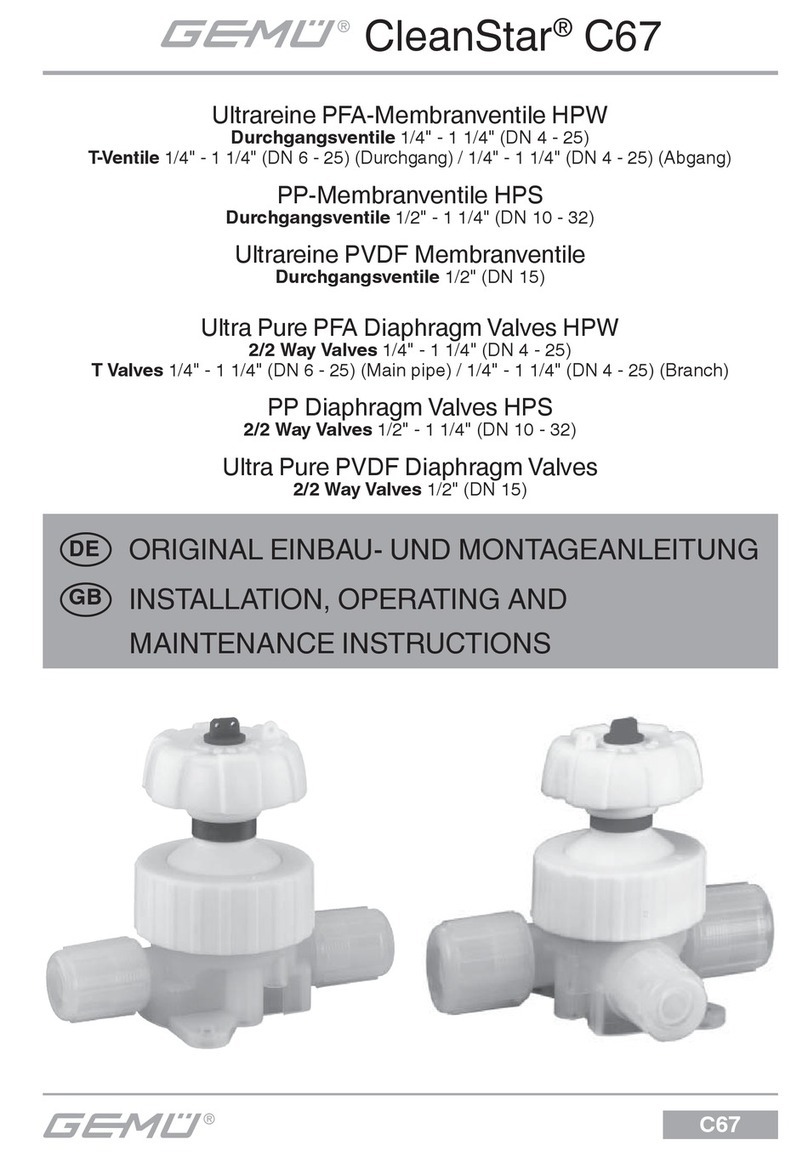
GEM
GEM C67 CleanStar Installation, Operating and Maintenance Instructions for the Installer and the User
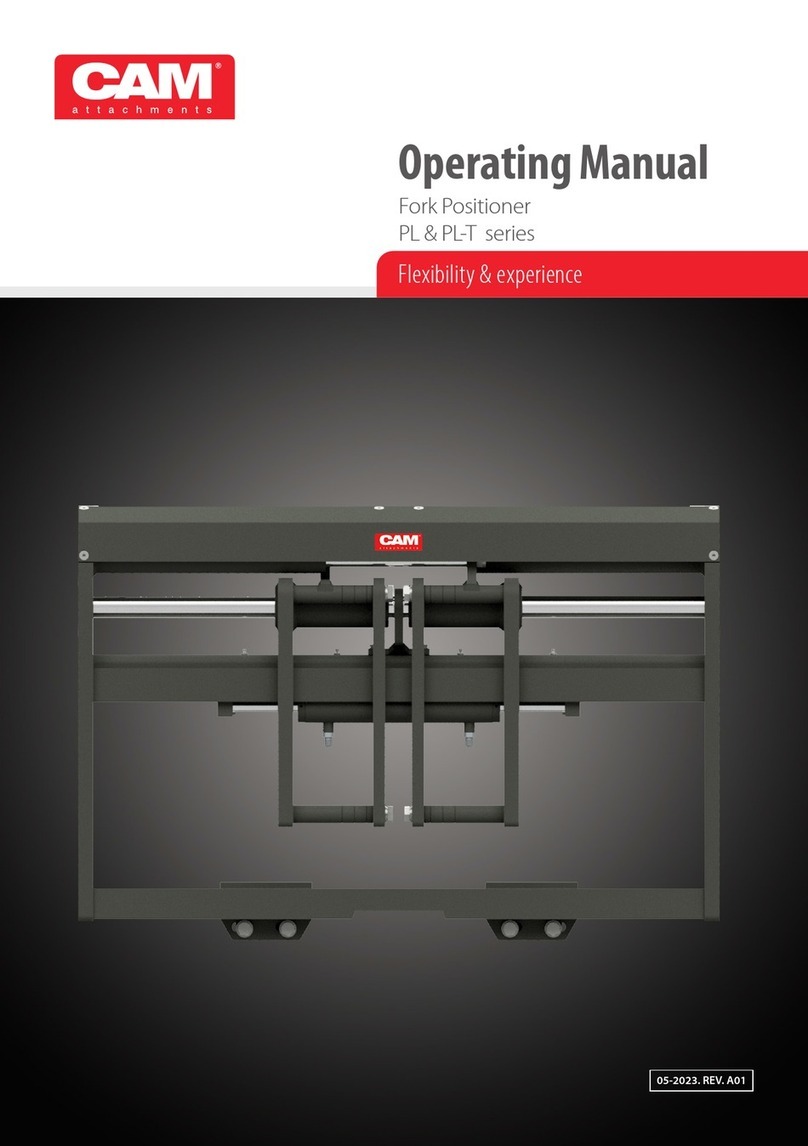
cam
cam PL Series operating manual
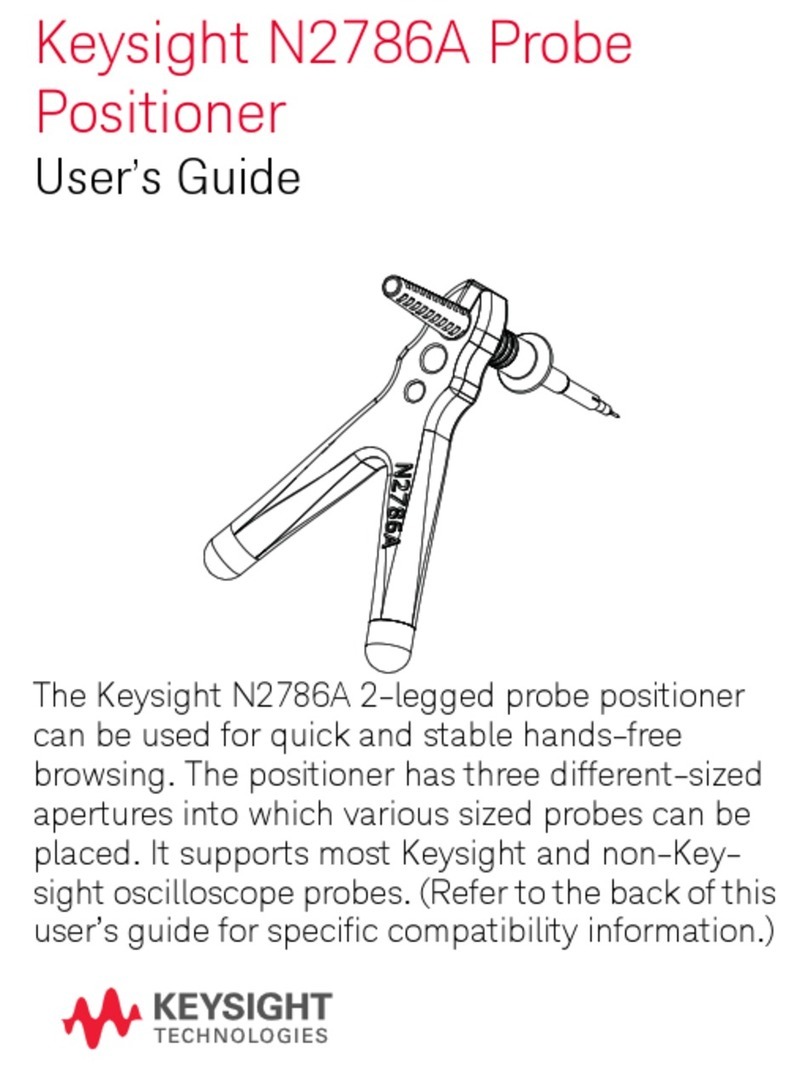
Keysight Technologies
Keysight Technologies N2786A user guide
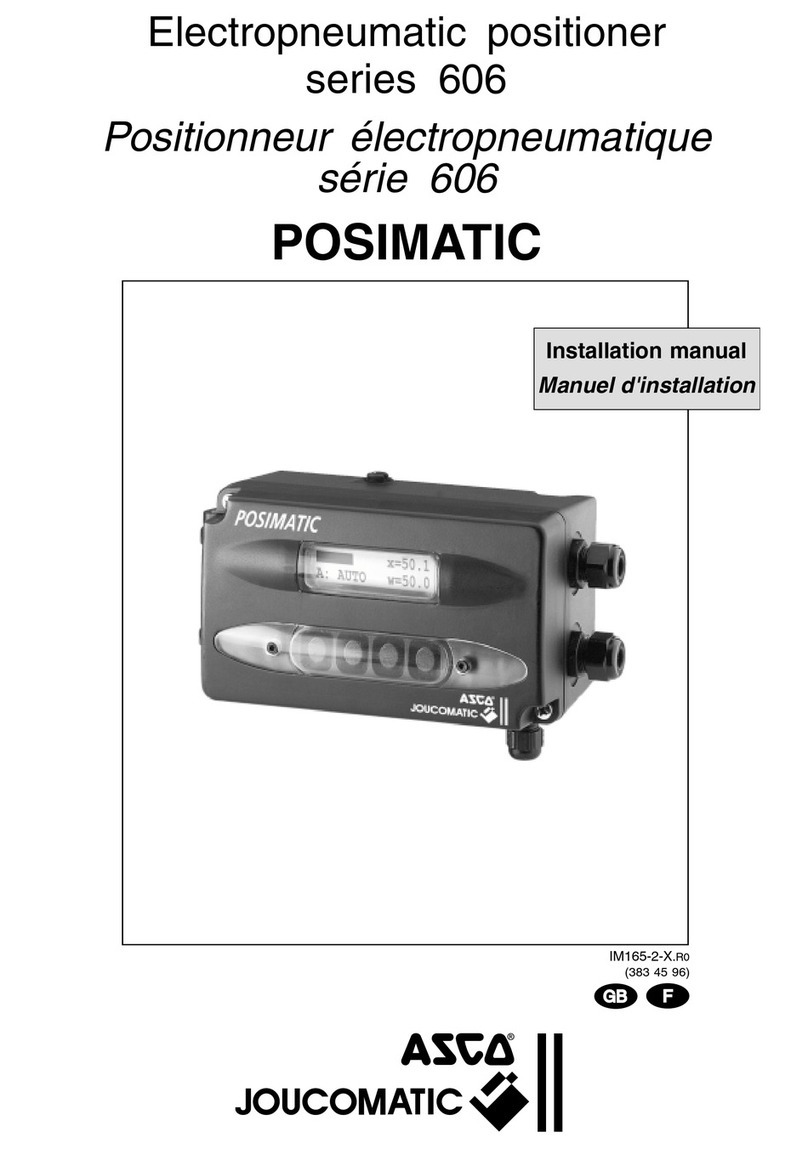
Asco
Asco POSIMATIC 606 Series installation manual

halstrup-walcher
halstrup-walcher PS*3**IO series instruction manual


